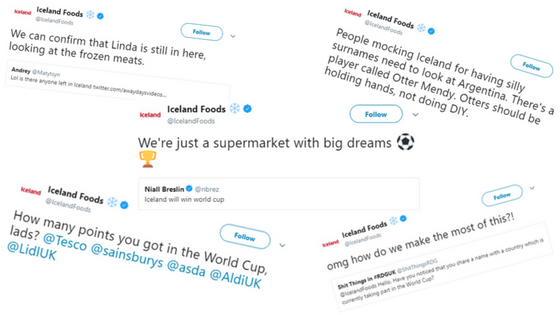How to use the World Cup to up your marketing game


From corruption scandals to accusations of human rights violations, this World Cup was steeped in controversy long before it began.
Traditionally, World Cups have a fantastic impact on the economy, especially for football (not soccer) fanatic countries like the UK, Spain, Germany, and Brazil. However, kicking off during the holiday season, amid a time of financial disruption for families around the globe, will it have the impact we’re used to?
The economic impact of the World Cup
The World Cup has had a huge impact on the hospitality sector. Normally, pubs and bars can expect big crowds clambering to get a table for the big games. In Britain, pub gardens are a precious commodity during a world cup as the 30 million+ book tables well in advance to enjoy the beautiful game in the sunshine.
But this year, due to the awkward timings of matches (many falling at 10 am or 1 pm), cold dark winter weather, and the cost-of-living crisis, 26.5 million people are expected to choose to watch the competition at home, friends’ houses, or at work.
However, it’s not all doom and gloom. An estimated £1 billion will be spent on food and drink as spectators stock up for viewing parties. Sportwear and souvenir sales are expected to rise (albeit at a much smaller degree than other World Cups) with estimations coming in at around £258.4 million.
Getting involved in the World Cup
We hear you asking: “but what if I’m not in the hospitality, sportswear, or grocery sectors – how do we get involved?”
Brands have been tapping into the excitement of sporting events. It makes for a fun customer experience and a fun campaign for marketers to work on. Retail brands like ASOS and New Look have used results and kick-off times to launch limited-time offers.
It’s important to be conscious of the sensitivities around this world cup. If football does not usually make up a large part of your marketing campaigns, then you can’t go in hot and heavy. Ease in and ascertain how your audience feels about your messaging.
1. Think of your fans
There’s no point running a world cup themed campaign if your audience isn’t going to be engaged, so make sure whatever you do it’ll appeal to your customers.
Marketing week recently found that half of UK adults respect brands speaking out about issues surrounding the World Cup. This World Cup poses a unique difficulty because it falls in the middle of the holiday season. You need to understand what your customers are looking for.
Are they engaged in social activism? Do they want to align themselves with brands who stand up for what they believe is right? Recent research into brand loyalty found that the answer is a resounding yes. Modern consumers want to engage with brands that share their moral values.
Or are your customers at the other end of the spectrum? Are they on the hunt for the perfect Christmas gift and are perfectly content not receiving World Cup content?
Your customer insights will provide you with the answers you need. Data about what and where are your customers engaging will be invaluable during this busy time.
2. Play the field with your World Cup marketing
Cross-channel marketing is essential year-round, not just for the World Cup. But ensuring you’ve got consistent messaging across all channels will help your marketing land with impact.
Consumers are on their smartphones more than ever so make sure you’re optimized for mobile. Whether you have an app or a headless commerce store or a large SMS database, customers are demanding seamless experiences no matter where they are.
3. Be ready for anything
One of the most exciting things about the World Cup is its unpredictability.
Utilizing the moments nobody expects is a fantastic way to engage with your customers throughout the month when the world goes football mad. Iceland foods massively leaned into this during the 2018 World Cup when the country Iceland drew with Argentina in their first World Cup match.

Spontaneous and relevant messaging in the moment keeps customers engaged. Regardless of whether they’re about to make a purchase or not, being ready for anything will leave customers thinking positively about your brand.
4. Don’t score an own goal
Don’t ruin your chances of winning big with your World Cup marketing. FIFA has strict rules about how you can and can’t advertise during the competition. Their “Official Marks” must not be used in unauthorized marketing. This includes the official emblem, trophy, and mascot.
Additionally, they have a range of “word marks” – specific wording relating to the event – that you can’t use in your promotions such as ‘FIFA World Cup’ and ‘Qatar 2022’. There are still plenty of ways to get in on the action. Sporting phrases and terms are the best way around this.
5. Capture the spirit of the game
One of the most important things to remember is to have fun!
The event itself may be shrouded in controversy but your marketing doesn’t have to be. You can keep a distance from the heavy-hitting issues around whilst still embracing the fun and community around the World Cup. Your customers will have their highs and lows, or they may not care about it at all, but make the most of this opportunity to try new things.
Did the underdog beat a top-tier team? Follow one surprise with another and have a flash sale to celebrate! Are you looking to expand your contact list? Why not organize a world cup themed competition to encourage sign-ups? Maybe think about adapting your abandoned cart automation to include a “did you get distracted by the football” message.
For ideas and inspiration about how to improve your email game, head to our resources page today.


